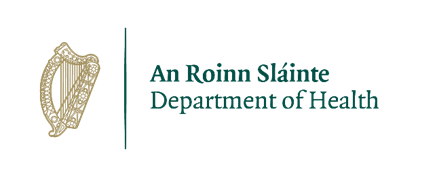
The Productivity and Savings Taskforce, jointly chaired by the Secretary General of his Department and the CEO of the HSE, was established by the Minister in January 2024.
The Action Plan sets out an ambitious and realistic programme of savings targets aimed at minimising the level of financial risk the HSE is facing in 2024; and a range of productivity measures that aim to maximise access to health services for patients.
Substantial savings of approximately €424 million in 2024 (€554 million full year saving) are being targeted including medicines expenditure, non-pay costs, procurement costs, the cost of care in long term residential care for older people, and management consultancy costs.
The Action Plan is intended to be a ‘living document’ and will be added to and amended during the year. Further measures will be announced shortly.
These savings are intended to reduce the extent of the financial risk facing the health sector in 2024. They are balanced, however, with the fundamental need to deliver safe and quality care and services to patients.
The savings and productivity targets will generally be devolved to regional leads and will be reported on regularly via the Taskforce to the Minster. The Productivity and Savings Taskforce will continue to meet regularly and will provide monthly updates and progress against targets to the Minister for Health.
A new team is being established in the HSE, reporting directly to the CEO, and supported by external expertise in international healthcare savings and productivity to aid the work of the Productivity Taskforce.
The Taskforce has established that there is clear potential for the HSE and Department of Health to strengthen productivity across the health service, particularly in our hospitals.
This is evident in the accompanying report which is also being published today by the Minister for Health, Stephen Donnelly TD – “An Examination of Trends in Activity, Expenditure and Workforce in Publicly Funded Acute Hospitals in Ireland”.
This report was prepared after extensive data was requested by the Minister on performance and productivity across the health service and provides a base line against which to measure future productivity improvements.
The report shows how activity in hospitals has responded to increased funding and increases in workforce and capacity between 2016 and 2022. The paper will facilitate the work of the Productivity Taskforce to identify where, and how, productivity can be improved within the health service.
Commenting on the publication, Minister for Health, Stephen Donnelly said:
“To meet the needs of a growing and ageing population, we know we will need to treat more patients in our hospitals and in community settings. As Minister, I want to deliver increased funding to help provide improved care and better access to patients. In 2023 we saw outpatient activity rise 6%, Day Cases 7% and Inpatient activity rise 6%. Our health outcomes are improving all the time and our waiting lists have decreased for the last two years in a row. More importantly, the number of patients exceeding the 10/12 week Slaintecare wait time targets has decreased substantially since the pandemic peak (170,0000) and by a significant 11% in 2023. This is very positive, and we will work hard to deliver another reduction in waiting times in 2024.
“As well as improving access and patient outcomes, we must ensure that we are maximising productivity in our health service. That is why I commissioned extensive research into productivity in our acute hospitals. Our acute hospitals account for a third of our healthcare spend, so it made sense to focus our initial analysis here.”
“Between 2016 and 2022, the health service budget increased by over €8bn. We currently rank 9th in terms of spending per capita out of the EU14 adjusting for prices. As highlighted in the analysis of our acute hospitals, staff numbers have grown by 30%, or 16,000 additional WTEs to 2022. We have 2,500 more doctors, 5,600 more nurses and 3,700 more support and administrative staff. And yet, as this analysis shows, activity in our hospitals has increased by less than 10% over the same period.”
In addition – some other findings include:
- Inpatient Discharges: 623,000 patients were discharged from publicly funded acute hospitals in 2022. This constitutes a 3.5% decrease in activity relative to 2016. Adjusting this for the relative complexity of treatment received by each of these patients over time results in a 3% growth in weighted inpatient discharges.
- Day-Case Discharges: 1.12 million day-case discharges were delivered in 2022. This constitutes a 6.3% increase in activity relative to 2016. Adjusting this for increased patient complexity results in a 10% growth in weighted day-case discharges.
- Emergency Presentations: 1.66 million emergency presentations were seen in 2022. This constitutes a 21% increase in activity relative to 2016.
- Composite Activity: This paper presents a novel way of understanding the above activity in a single composite indicator at whole of site level. “Composite” activity (aggregate complexity-adjusted Inpatient, complexity-adjusted Day-Case, Outpatient and Emergency, weighted by unit costs for each area), adjusted for patient complexity, has increased by 3.8% over the period 2016 to 2022.
This report shows a large divergence in all sites between the expenditure and workforce provided, relative to the growth in either separate activity metrics or “composite” activity. In most cases, the divergence is significant, with the percentage growth in composite activity between 2016 and 2022 either negative, or two times behind workforce growth, and up to three times behind real expenditure growth over the same period.
The Minister said: “Many factors, including infrastructure and technology can play a role in this. Nobody is seeking to ascribe blame. But the data very clearly highlights some very real productivity challenges that we must overcome with the help of our clinicians and management teams. “I have met directly with a number of clinical leads to get their perspectives. I have also asked the HSE Board to prioritise improved productivity in 2024. The findings of this report will support the Productivity Taskforce I established in maximising efficiency across the health service.”
